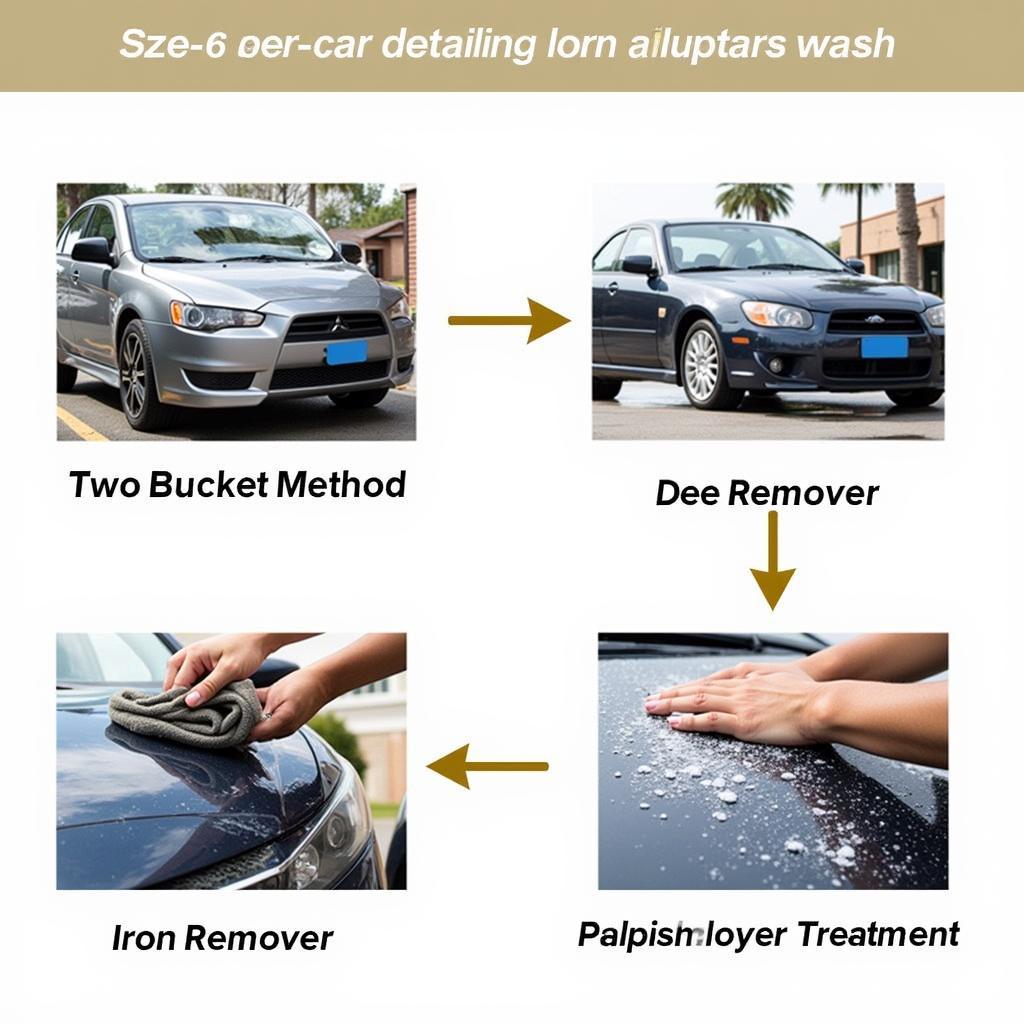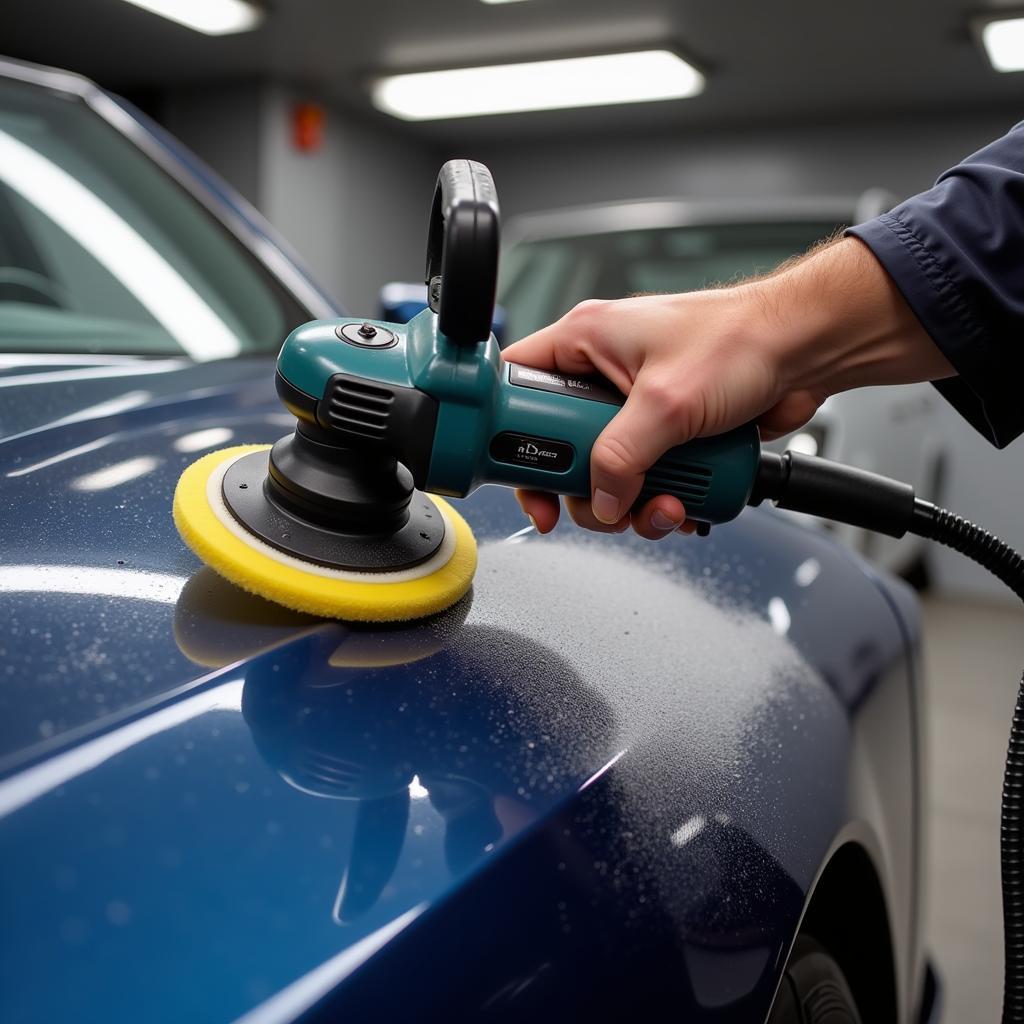Detailing the body of your car is more than just a wash and wax; it’s a meticulous process that restores and protects your vehicle’s paint, leaving it looking its absolute best. Whether you’re preparing to sell your car or simply want to maintain its pristine condition, understanding how to detail your car’s body is an essential skill for any car owner.
Car body detailing involves a multi-step process, starting with a thorough wash to remove loose dirt and grime. This is followed by decontamination to remove embedded contaminants like iron particles and tree sap. Then, the paint is corrected using polishing or paint correction techniques to remove swirls, scratches, and other imperfections. Finally, protection is added in the form of wax or sealant to preserve the shine and protect the paint from the elements. Learning how to detail the body of your car can save you money in the long run and significantly enhance your vehicle’s appearance. Check out our guide on what is car body detailing for a deeper dive into the process.
Washing and Decontamination: The Foundation of Car Body Detailing
A proper wash is the crucial first step in how to detail the body of your car. Use a pH-neutral car wash soap and a two-bucket method (one for soapy water, one for rinsing your wash mitt) to minimize swirling and scratching. After washing, decontamination is key to removing stubborn contaminants that washing alone can’t handle. Iron removers dissolve iron particles, while tar remover tackles sticky residues. A clay bar treatment further removes embedded contaminants, leaving the surface perfectly smooth.
 Car Wash and Decontamination Process
Car Wash and Decontamination Process
Paint Correction: Restoring Your Car’s Finish
Paint correction is the heart of car body detailing, addressing imperfections like swirl marks, scratches, and oxidation. This process can range from light polishing to more intensive wet sanding, depending on the severity of the imperfections. Understanding the different levels of paint correction is vital for achieving optimal results without compromising the clear coat. For minor imperfections, a polishing compound and a dual-action polisher can often work wonders. Deeper scratches may require more aggressive compounding followed by polishing to refine the finish.
 Paint Correction Process Using a Dual-Action Polisher
Paint Correction Process Using a Dual-Action Polisher
Thinking about selling your car? Detailing can significantly boost its value. Learn more about should I detail my car before selling it?
Protection: Shielding Your Car’s Paint
After meticulously correcting the paint, protection is essential to maintain the flawless finish. Wax or sealant provides a protective barrier against UV rays, environmental contaminants, and minor scratches. Wax offers a deep, warm shine, while sealant provides a more durable and longer-lasting protection. Choosing the right product depends on your preferences and the level of protection you desire. Ceramic coatings offer even greater durability and protection, although they are typically more expensive to apply.
Finishing Touches: The Details Matter
Once the main body of the car is detailed, don’t forget the finishing touches. Cleaning and protecting the trim, tires, and wheels adds to the overall polished look. Applying a tire dressing gives the tires a rich, black finish, while a wheel sealant protects them from brake dust and road grime. Paying attention to these details elevates the entire car detailing experience. Wondering if paint can be repaired during car detailing? Our guide provides the answers.
 Applying Protective Wax to Car Body
Applying Protective Wax to Car Body
Conclusion
Knowing how to detail the body of your car is a rewarding skill that allows you to maintain and enhance your vehicle’s appearance. By following these steps and utilizing the right techniques and products, you can achieve professional-level results and keep your car looking its best. From washing and decontamination to paint correction and protection, each step plays a critical role in the overall detailing process.
FAQs
-
How often should I detail my car’s body? Ideally, a full detail should be performed every 6-12 months, depending on the vehicle’s usage and environmental exposure.
-
What is the difference between waxing and sealing? Wax provides a warm, deep shine and some protection, while sealant offers a more durable and longer-lasting protective layer.
-
Do I need special tools for car body detailing? While some specialized tools like a dual-action polisher can be helpful, many detailing tasks can be accomplished with readily available supplies.
-
Can I detail my car myself, or should I hire a professional? Detailing your car yourself can be a rewarding experience, but professional detailers have the expertise and equipment to handle more complex issues.
-
What are the benefits of car body detailing? Detailing enhances your car’s appearance, protects the paint, and can even increase its resale value.
Interested in a career in car detailing? Check out our guide on how to become a certified car detailer. Need to find specific details about your car? Learn how to get car details using vin number.
Need More Help?
If you have further questions or need assistance with your car detailing needs, don’t hesitate to contact us.
WhatsApp: +1(641)206-8880
Email: [email protected]
Our customer support team is available 24/7 to help you.

Leave a Reply